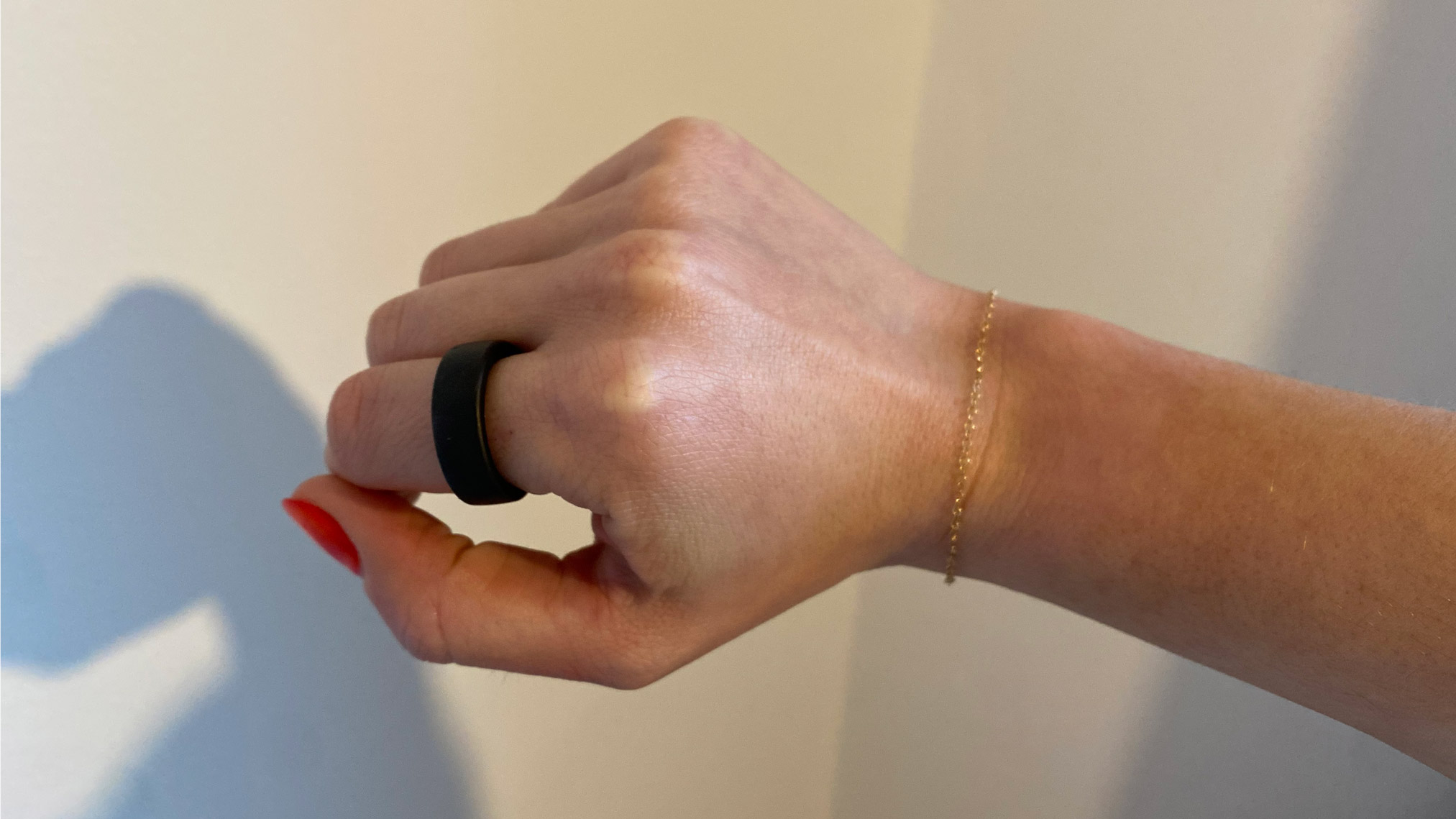I tried the Oura ring for a week – but I still prefer my Garmin

The Oura Ring Generation 3, a sleek and unobtrusive sleep-tracking wearable, found its way into my life at the perfect time. Over the past year, I've been on a mission to improve my sleep; something that has been on my radar since realizing that I cannot, in fact, survive on just six hours of sleep every night. It’s become clear that the older I get the more I need a healthy sleep routine to help me function better, be in a better mood, and to aid my exercise recovery.
However, logging my sleep pattern consistently proved challenging. I easily forget to write a grocery list before my food shop, never mind remembering to log sleep every day or wear a cumbersome device to bed. When TechRadar’s fitness editor handed me the best smart ring available right now (and one our best sleep trackers), the Oura Generation 3, I was really eager to discover if it could impact my sleep quality and daily readiness.
Working out with the Oura Ring

As an avid runner accustomed to the best Garmin watches, the Oura ring's arrival was met with curiosity. Having recently completed a grueling half marathon, my trusty Garmin Fenix had been a constant companion during the twelve weeks of intense training.
But as I unboxed and slipped on the Oura ring, the one thing immediately struck me was comfort. This ring felt like a feather on my finger, a welcome contrast to my rather clunky and weighty Garmin Fenix 7. I'm no stranger to wearing rings as jewelry, and Oura's lightweight design passed my comfort test with flying colors.
Setting up the Oura ring was a breeze. A quick charge (just over an hour), an app download, and basic profile input were all that was required. I was a little disappointed that the ring couldn’t provide feedback from my runs such as pace or distance, meaning I had to wear two wearables at once.
I also had to take the ring off for weightlifting sessions, in case of scratches or damaging the electronics, but it seemed like I was losing out on valuable workout and recovery data here. I also use skincare products before bed, so I needed to integrate the ring into my bedtime routine and ensure I removed it before and put it back on afterwards.
Sleep tracking with the Oura Ring

The Oura Ring promises a lot. It claims to use advanced technology to collect sleep data, providing insights that set it apart from traditional wearables, even the best smartwatches. Oura's approach to sleep tracking combines body temperature and activity patterns for precision. It directly measures skin temperature, detecting natural fluctuations as you fall asleep and wake, and Oura’s CEO Tom Hale claims it’s more accurate than watches due to the finger placement, where it can monitor blood flow more efficiently.
Sign up for breaking news, reviews, opinion, top tech deals, and more.
The ring's unobtrusive design allows for comfortable sleep tracking, free from bright screens and notifications that are known to disrupt your rest. Additionally, the accelerometer sensor on your finger provides sensitive activity detection for nighttime movements. This helps get a better insight into my overall sleep behavior.
After confirming that you're asleep, the Oura ring gathers biometric data to generate sleep stage graphs known as "hypnograms." These hypnograms classify your sleep into awake, light, deep, and REM stages, relying on movement and changes in heart rate, respiration, and temperature to identify sleep stage patterns.
I decided to conduct a head-to-head comparison between the Oura ring and my Garmin Fenix 7 to see how their sleep-tracking results stack up. To my surprise, the stats were fairly similar. There might have been a twenty-minute difference in the time each device estimated I fell asleep, but both agreed on my usual 06:20 wake-up time, which was remarkably accurate. Whether it was my 95 minutes of REM sleep or variations in deep sleep, the results were on par.
The Oura app provided encouraging summaries of my sleep, such as "Sharp as a tack," making it fun and rewarding to review my sleep performance. On one night, according to the Oura app I supposedly slept for eight hours, 41 minutes, a personal record for someone who typically falls short of the recommended seven to eight hours. In contrast, my Garmin logged a longer sleep duration (nine hours, 13 minutes) but categorized a substantial portion as restless sleep.
After reflecting on my night and morning activities, I found that the Oura ring's assessment was more accurate, as I had woken up before my partner and decided to go make a coffee and read in bed quietly. My Garmin watch mistook this for restlessness, while the Oura ring seemed to recognize it as a peaceful lie-in.
What I learned from wearing the Oura Ring for a week

Throughout my week of testing, the Oura Ring had a positive impact on my sleep quality and overall readiness for the day as I tuned into what my energy levels felt like according to the sleep data that I was gaining.
What set it apart was its non-intrusive presence on my finger, providing an uninterrupted night's rest. Unlike watches, the Oura Ring maintained a low profile and discouraged late-night screen checks – after all, unlike my Fenix, it’s totally screenless, and I knew the detailed stats would be waiting for me on the Oura app in the morning.
However, this came with a drawback – the temptation to peek at the app before bedtime and as soon as I woke up which isn’t a great bedtime habit. As many sleep enthusiasts know, the blue light from screens is not conducive to deep, restful sleep. But, this small inconvenience encouraged me to establish a bedtime routine, something I typically wouldn't prioritize.
I appreciated the app's affirmations, which recognized the consistency in my bedtime habits. It noted I was giving my body and mind "just what they need the most: a consistent sleep-wake rhythm." My commitment to a week of ideal sleep didn't go unnoticed, with the app suggesting that I make time for a "fun thing" to boost my energy - a testament to my newfound commitment to rest.
That being said, I’m not convinced it’s worth paying $300 for, plus a monthly subscription. It almost emphasized to me that my best running watch is the only wearable I really need. My running watch is able to track all my workouts, including weightlifting sessions, provide in-depth feedback on my training and monitor my sleep and recovery.
I am a runner, so of course I’m biased toward using my Garmin, which provides valuable GPS information, for my everyday health data needs. Perhaps I need to work with the ring for a lengthier period before I convert to wearing an Oura for good, but despite the slimmer form factor being more comfy during sleep, I didn’t feel like the Oura brought me any groundbreaking stats that my Garmin couldn’t.
You might also like:
Jessica Downey is an experienced health and fitness writer with a particular interest in running. A former staff writer on Fit & Well and contributor to Runner's World, Jess is a PPA accredited magazine journalist born and raised in Scotland. When back home, she can be found running by the sea, swimming in it, or up a mountain somewhere.
